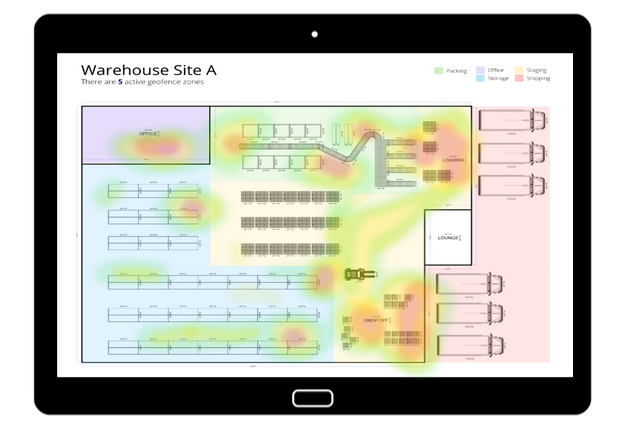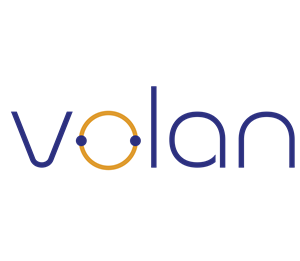What is a Time and Motion study?
What’s the best way to perform a task? Time and motion studies are a scientific way of cutting to the core of that question.
Simply put, “motion” entails the movements related to a task, and “time” is the duration it takes to complete a task. If we’re all doing the same task independently, the person who finishes the fastest, using the most effective “movements,” creates the best way of getting the job done without continuous observation.
Time and motion studies are about individual actions.
They implicate larger discussions on workforce optimization or the pursuit of the most efficient work environments and workplace practices.
We’ve come a long way in developing time and motion studies that leverage the latest technologies—digital representations of floorplans, heat maps, and micro-movement tracking. However, time and motion studies are anything but new.

They date back over one hundred years to a time when motion studies and recorded film were just getting started.
- Frank and Lillian Gilbreth are credited with founding this type of work, only about thirty years after the Roundhay Garden Scene, the world’s first film recorded in 1888 by French inventor Louis Le Prince. Frank Gilbreth worked as a bricklayer, and he noticed that each worker had a different way of laying bricks and that some methods were more efficient than others.
- He began to analyze the different work methods and determined the best way to improve efficiency in the process. From this moment on Frank became the pioneer in motion and time studies and he went on to revolutionize the construction industry with his data-driven efficiencies.
- Gilbreth’s methods require capturing workplace behaviors or how individuals operate specific tasks over time. The result is capturing the most effective method, breaking down actions into their constituent parts, and evaluating them by their relationship to the task’s duration.
Frank and Lillian Gilbreth were instrumental in blazing the trail for time and motion studies, and the methods they invented are still used today. Eventually, time and motion studies became a game-changer across every industry and is a widely accepted method for increasing productivity in every area. Time data has revolutionized management practices, industrial processes, and maximized productivity by implementing efficiency studies and developing more rigorous employee work assessments.
Why are time and motion studies important?
Time and motion studies produce valuable insights that help businesses achieve greater efficiency, lower operational costs, and increase workplace safety. Analyzing processes eliminates waste by finding problem areas that cut into the bottom line.
If Gilbreth’s time and motion studies provided the method of evaluating efficiency, Toyota Manufacturing Company’s Lean Manufacturing Model tells us what better efficiency means for clients. Lean methods diagnose everyday workplace practices, asking, does this add value?
With that question in mind, we can sort outcomes into how they create value in the workplace.
Time and motion studies provide the systematic method of evaluating individual tasks—the constituents of processes—and how they relate to these outcomes. Lean practices move businesses closer to process optimization by focusing on key outcomes.
Many businesses operate in the dark, using rough estimates and manual inputs. Workplace managers may have a knack for knowing best practices, but time and motion studies bring rigor to the discipline of workplace optimization.
Human efforts can only go so far in helping employees improve their productivity. With today’s technological advancements, employers who implement time studies have a strategic advantage. With the right technological tools, employers can
- automate processes
- streamline duties
- provide a more nuanced picture of workplace behaviors
The data captured by time and motion surveys removes human error by introducing a complete science and data-based way of finding and implementing best practices. From staffing needs to productivity goals, it’s hard enough to predict what your business will need in the future, so software packages, such as Volan’s People Positioning Intelligence, make businesses more nimble with real-time data on employee actions and how those actions relate to productivity metrics.
How do you conduct a time and motion survey?
On the warehouse and manufacturing floor, countless actions comprise what employees do throughout the day. As a manager, it can be difficult to create and implement the correct motions and eliminate ineffective techniques without the correct data.
The tools at our disposal have advanced considerably since the first time and motion surveys—we’re no longer analyzing employee video footage but tapping the latest algorithms to gather how employees work best.

Today’s time and motion surveys provide a scientific way to cut through that complexity, using software packages that leverage sensor data to analyze work processes. Here are a few steps to know how these methods can help your business.
- Define your goals. This is always the first place to start so that you can gather the correct data and stay focused on the important metrics. Knowing the specific tasks of your business and how they relate to business performance is key. Goals may be specific to a particular production floor or process, but they will always strive to create more efficient systems to unlock real business growth. Furthermore, goals allow you to set reasonable benchmarks and measure the right metrics!
- Set the parameters. Parameters may entail the basic measurable data you need to assess a task. On the most basic level, this could be clear timestamps beginning and ending an employee’s action. It could also entail coding the specific actions throughout a task to know which movements are most contingent on high-quality performance.
- Leverage the right tools for analysis. After you’ve defined parameters and gathered a sample of employee performances, you’re ready to analyze your data. That means creating baselines and knowing where productivity can improve. Using the data gathered by time and motion studies, task productivity levels sort into three categories, “top performers,” “baseline,” and “needs improvement.” Importantly, employees may need to target different movements to become more efficient. That’s why in creating the parameters for evaluation, it’s essential to track all actions under a given task to know where businesses have the greatest opportunities to improve.
- Deliver insights that take your business to the next level. Time and motion studies deliver nuanced insights that help businesses in resource allocation, and they have implications for the work environment, staffing, and training. From fulfilling orders to manufacturing goods—motion and analyses may reveal that these tasks aren’t as simple as you may have thought. The Volan Positioning System continuously gathers data for instant analysis, producing actionable insights that yield real growth. Notably, the right technology creates a power of prediction, knowing how to invest in labor productivity.
Applying and implementing the time and motion study
Use the right technologies to develop the insights you need. Volan’s People Positioning Intelligence is an innovative solution for workforce optimization.
The technology uses sensors to capture real-time location data, producing a clear picture of how people move throughout a facility or worksite.
Time and motion studies develop a baseline and then leverage algorithms to know when employees perform tasks better or worse—this constitutes either operational inefficiencies or opportunities to understand when to streamline successes.
As a business, you may have already been assessing some of the time and motion study data. Instead of dismantling the systems in place, it would be best to integrate technological interventions with the feedback you capture already. Employee or client feedback is invaluable in knowing where to optimize productivity. Leveraging a new technology should supplement these practices to develop even better analytical insights.
Furthermore, if you have already been collecting feedback from employees it’s incredibly insightful to compare the data with where employees THINK their time is spent.
Manual feedback may capture the subjective aspects of a pain point, but time and motion studies capture the quantitative dimensions, providing a solid footing to make meaningful change. They also free up massive amounts of time because continuous observation is no longer necessary.
Time and motion studies should complement other digital tools. Time and motion studies have direct implications for work zone analytics, workforce productivity, and other mechanisms of measuring business success and carry implications for both the workflow, productivity, and employees.
Workforce movement efficiency implicates the number of employees you may need on the floor, and the hours those employees need to work. Time and motion studies fine-tune the ability to pit production goals against the labor you need.
Analytical insights can inform forecasts for the personnel you need, but they can also show where there may be labor shortages or surpluses.
Visualizing your work zones is critical. Heatmaps provide live floor plan visualizations that show the “hot” and “cold” areas of work, where workers are most and least likely to travel throughout the day. 
Movement patterns should dictate workplace environment configurations. In this regard, Amazon Fulfillment Centers have become famous for masterful organization, leveraging expert algorithms that defy the odds in how facilities arrange products.
For example, worker pattern analyses reveal that placing Harry Potter books next to toothpaste is sometimes the optimal way to cut down on the time it takes for workers to retrieve products.
In a post-COVID world, worker safety is paramount. The visualization methods used in time and motion studies can also be tapped for live, real-time employee locations, key for contact tracing and other forms of keeping employees safe. Aggregating the outcomes of time and motion studies can also be used to manage workloads for employee health and well-being.
Conclusion
Time and motion studies get to the bottom of efficiency. Sensors are non-invasive and easy to install and manage, making their integration a simple way to achieve better workforce productivity.
Optimization strategies target the work environment and employee behaviors within that environment, and time and motion studies are a key to unlocking the dynamic between the two. Under wage increases, labor shortages, and supply constraints, businesses are doing everything in their power to manage operational costs.
On this front, time and motion strategies are invaluable—an incredibly effective investment in the future of your business.



